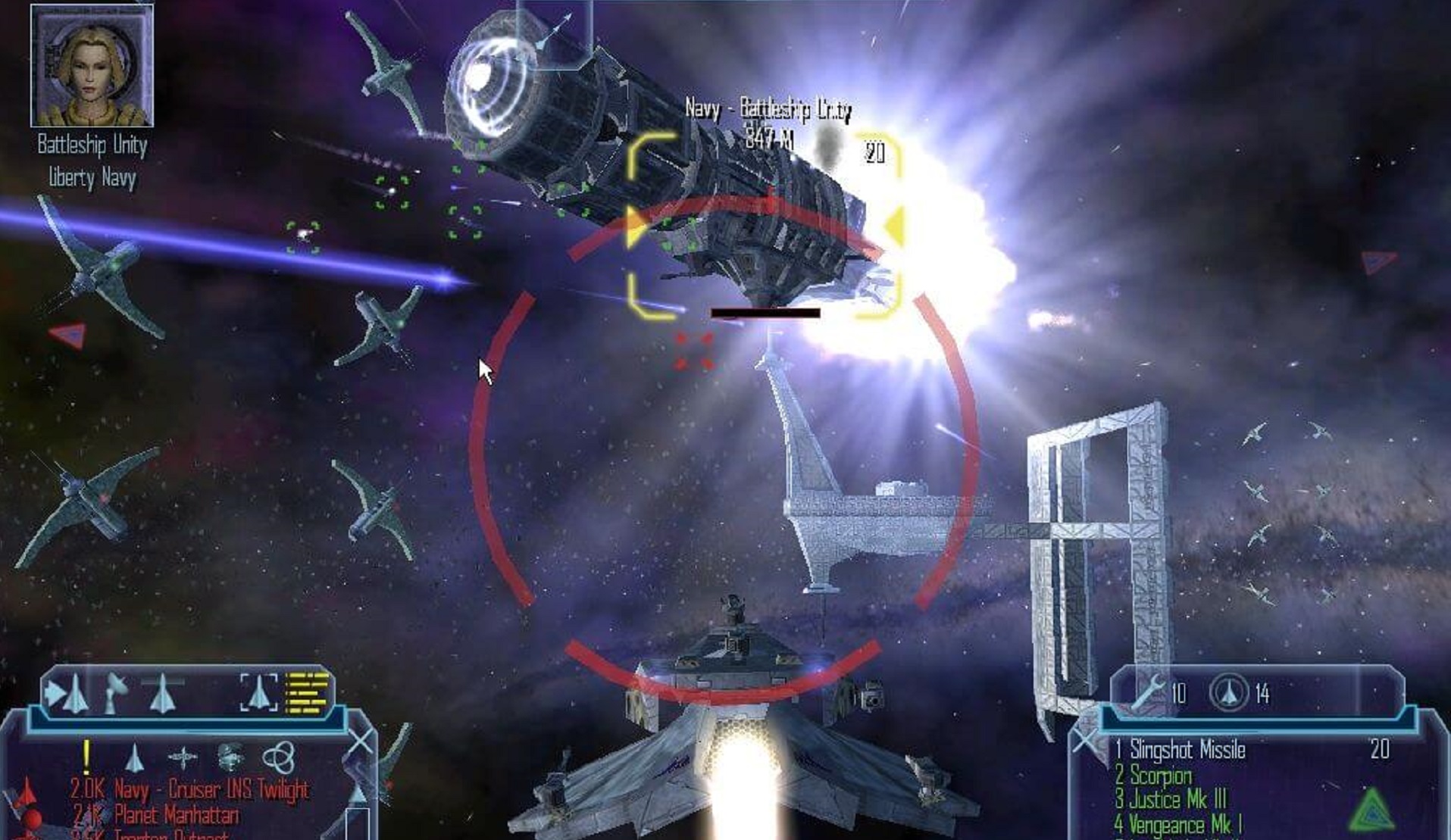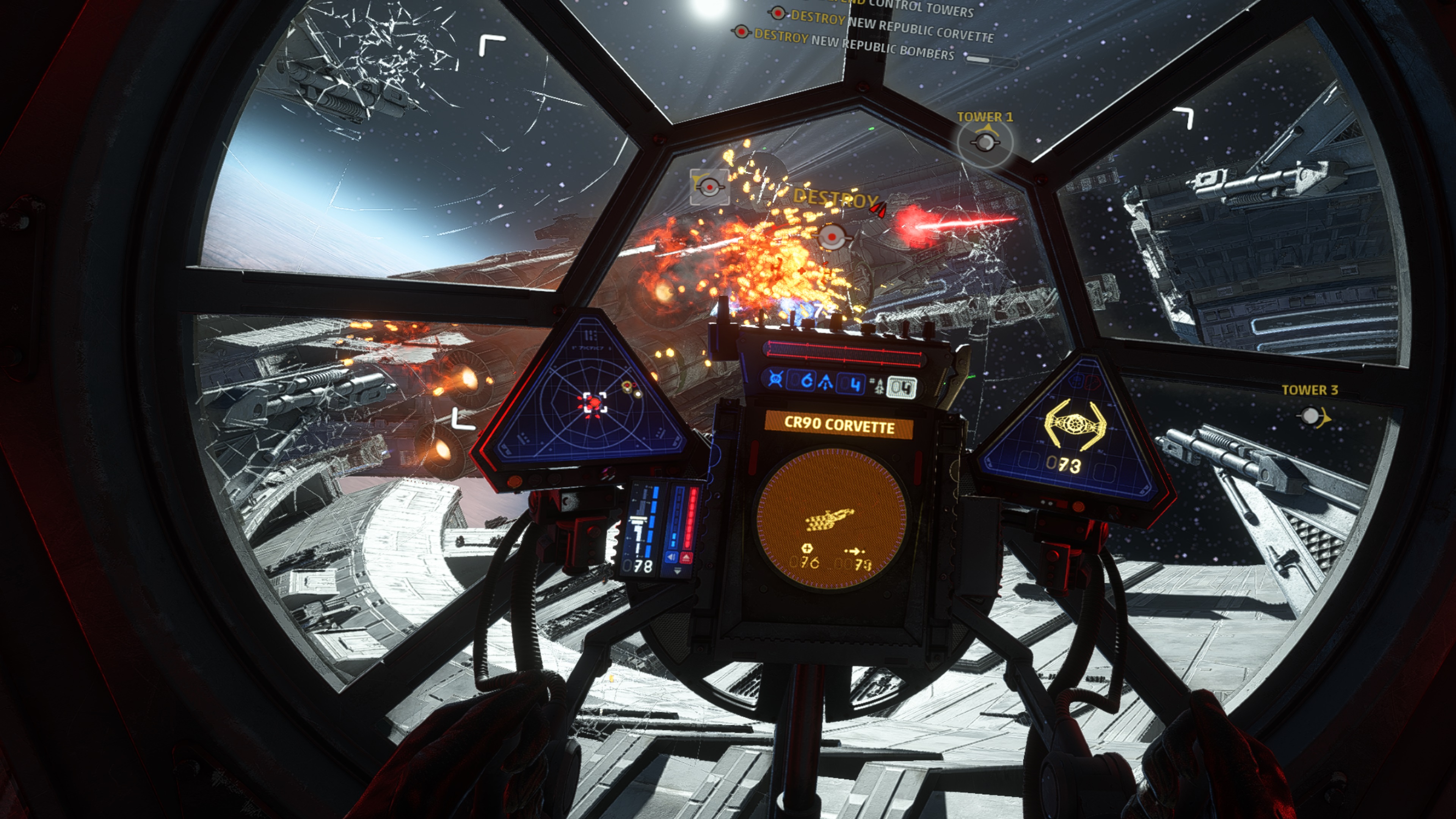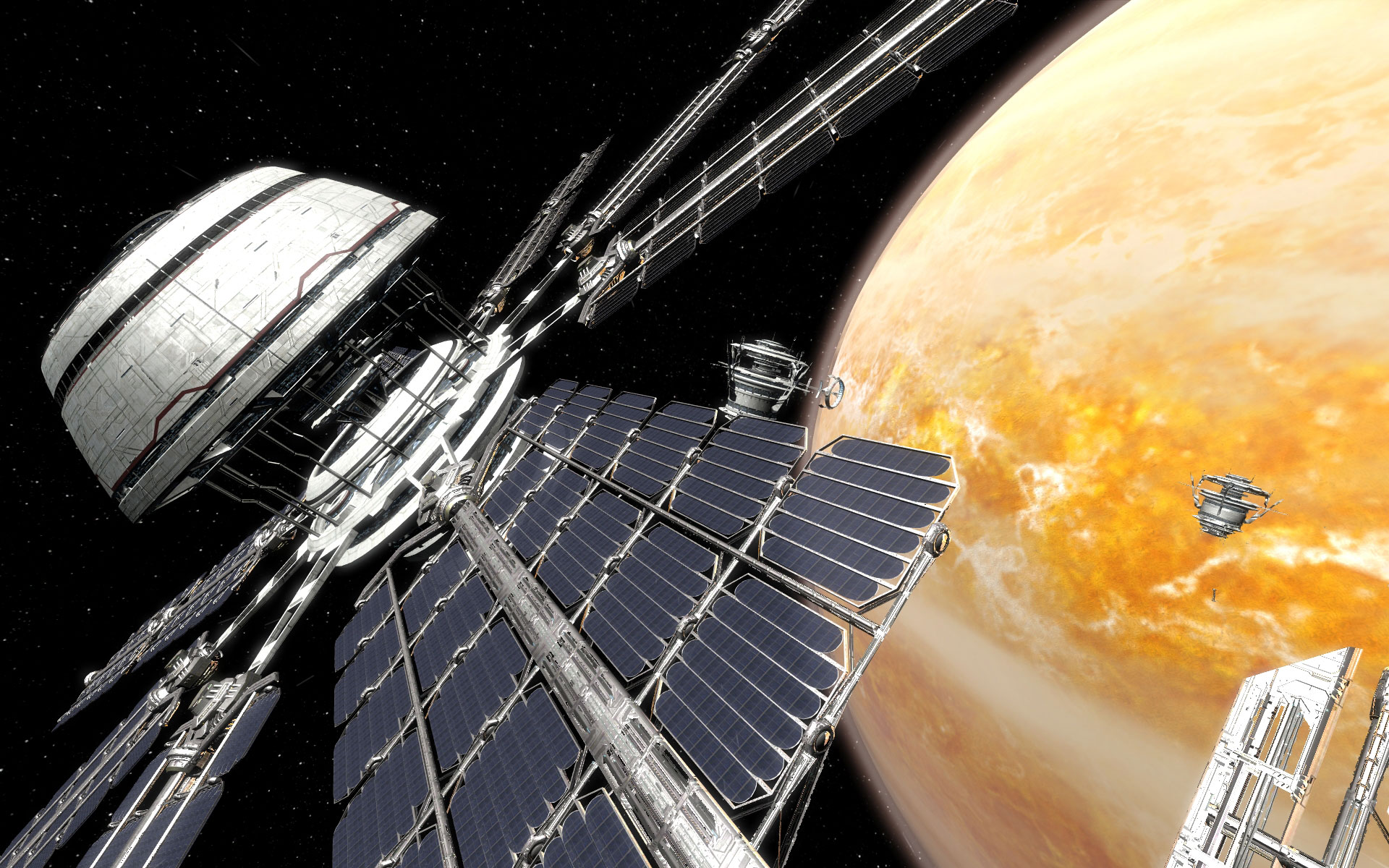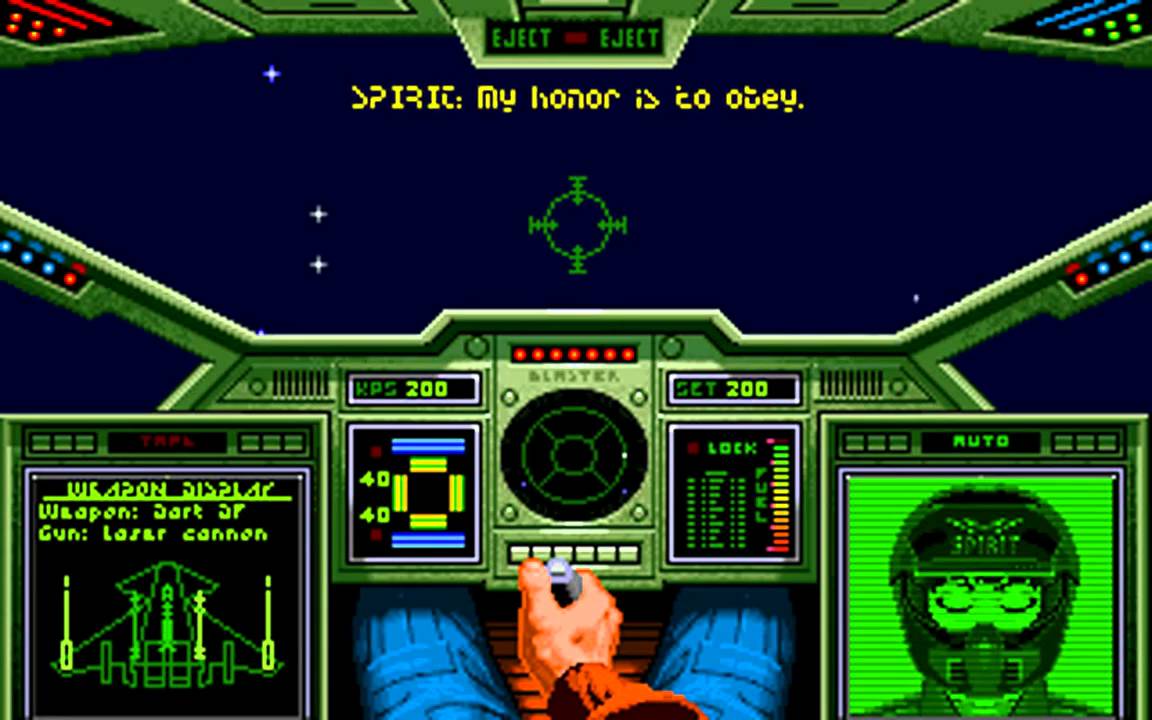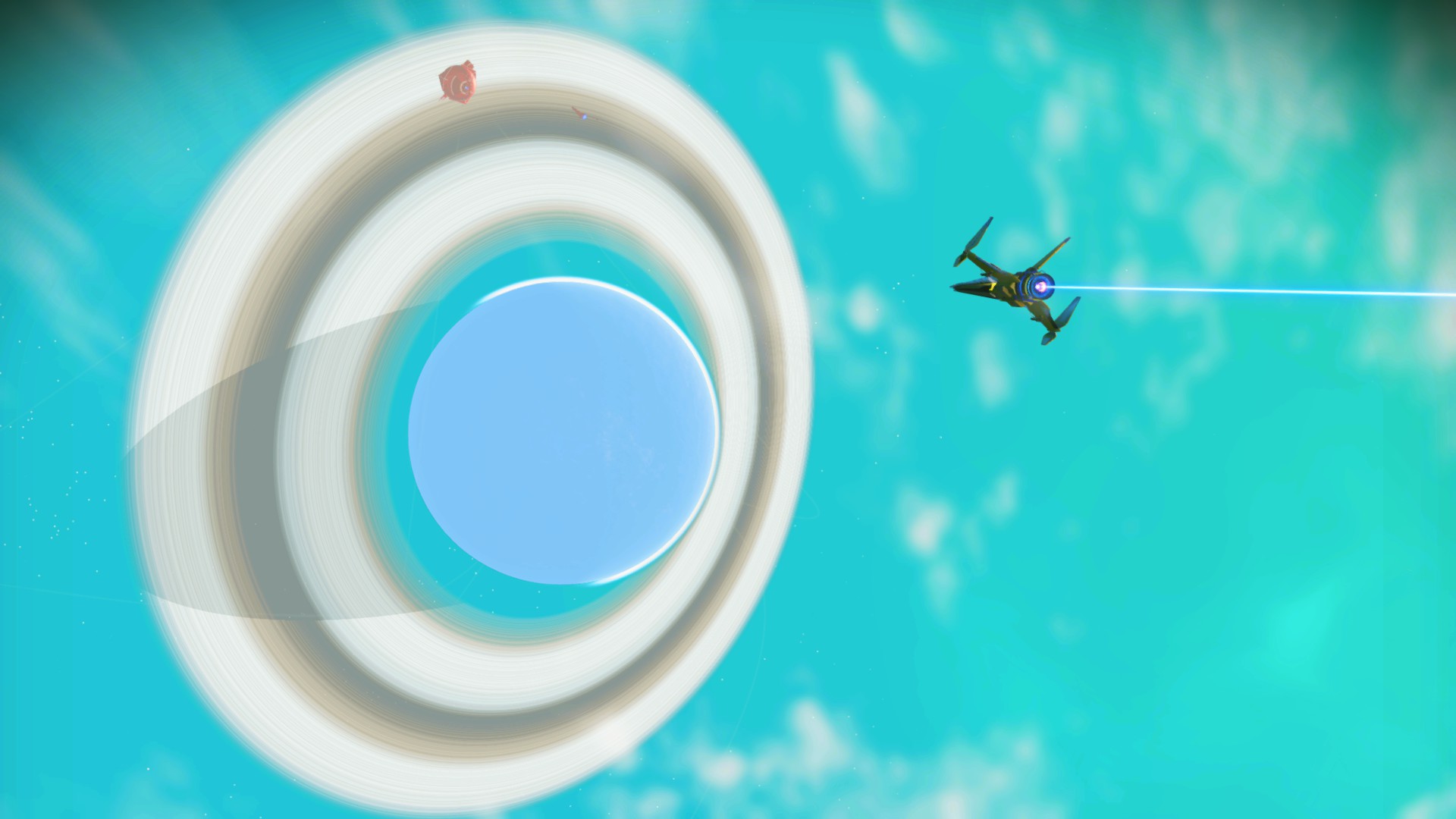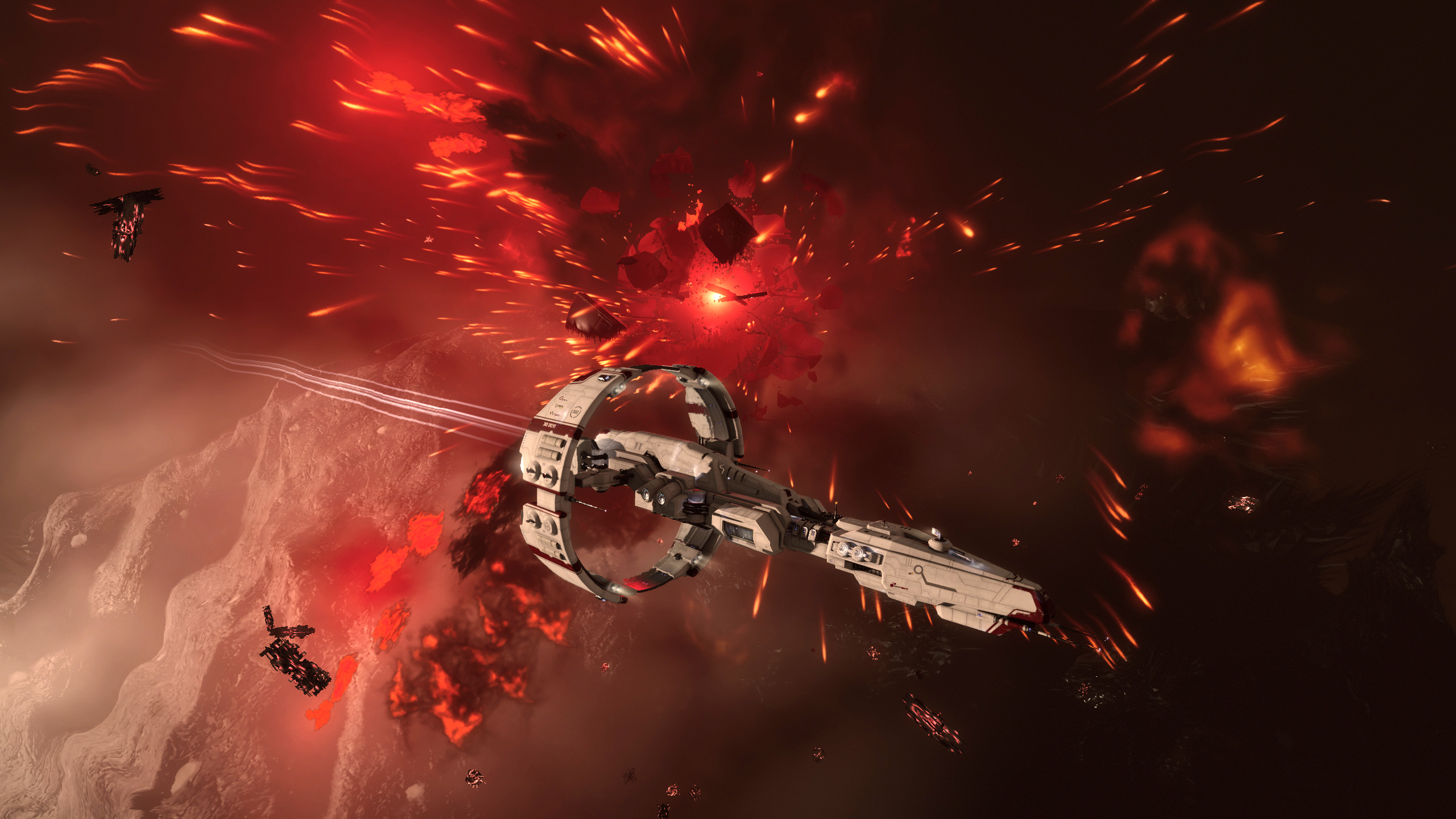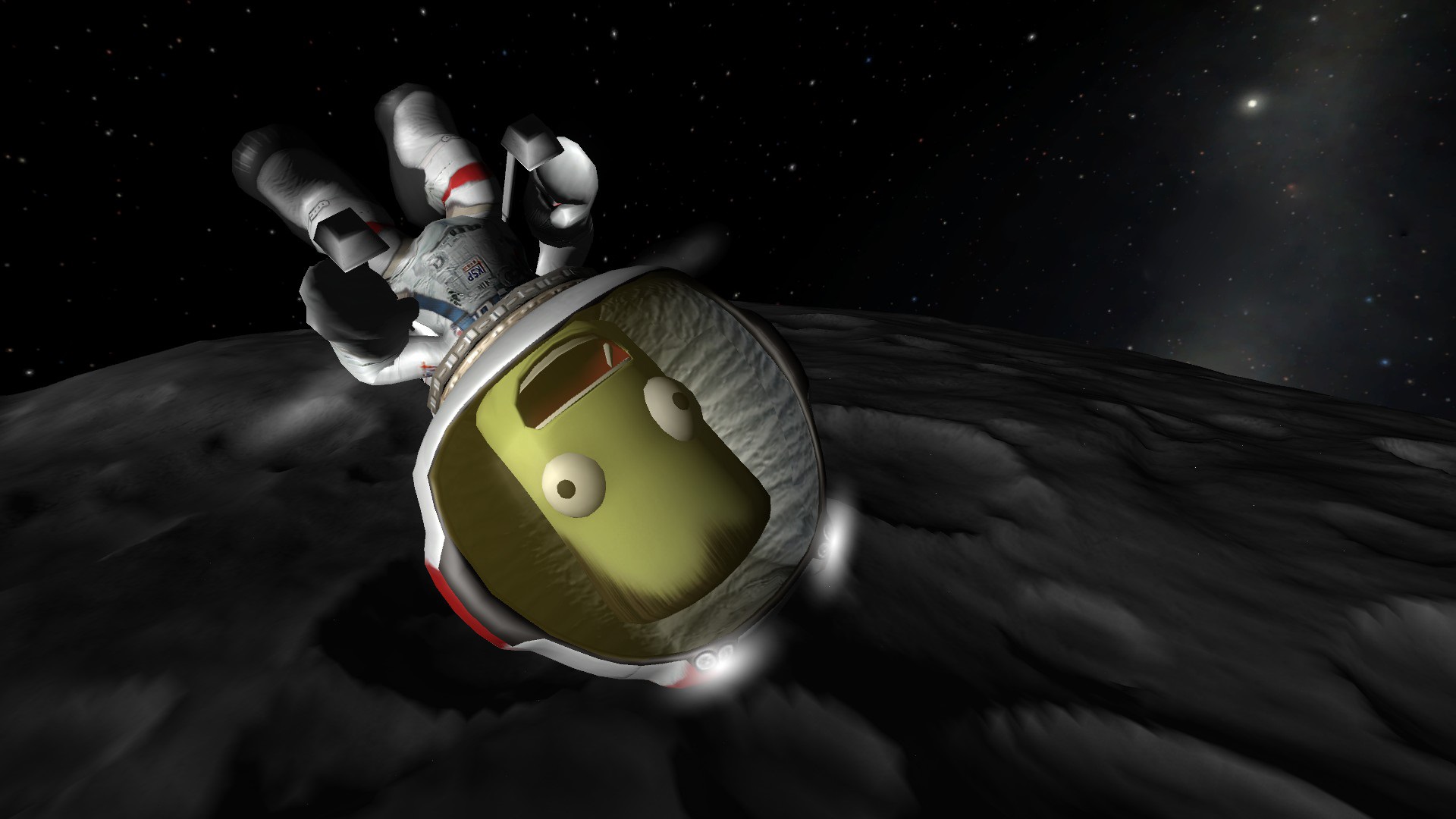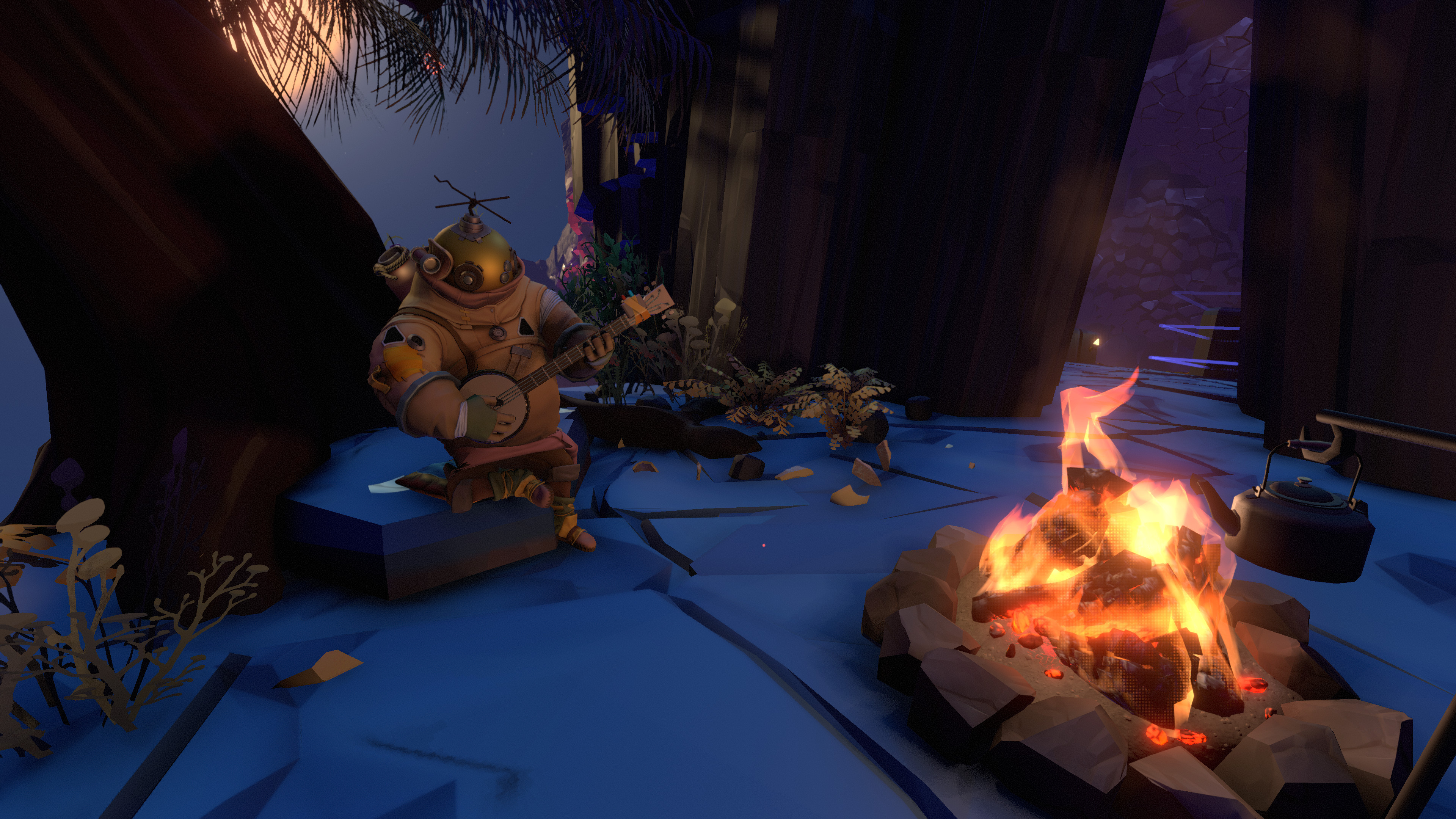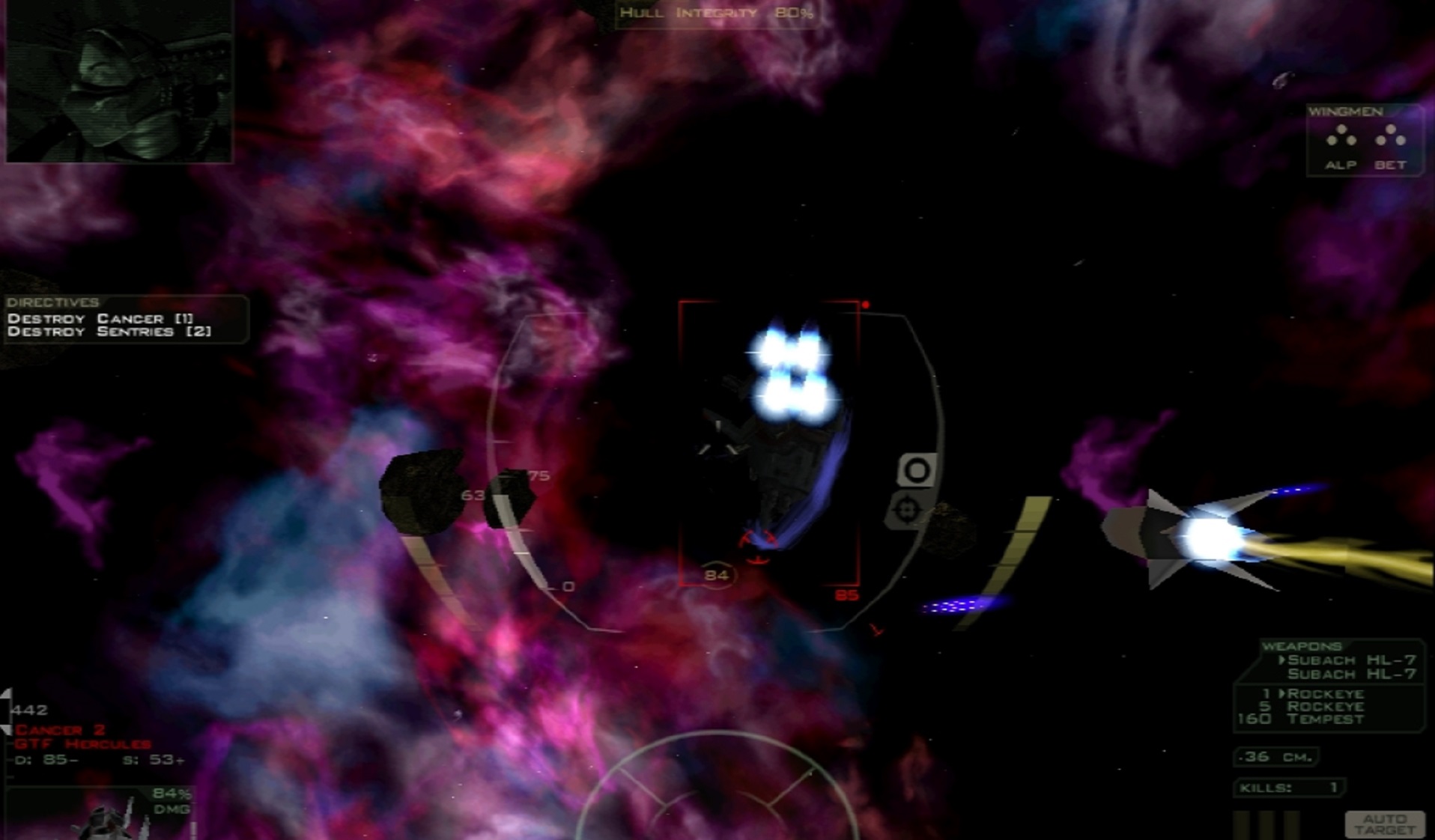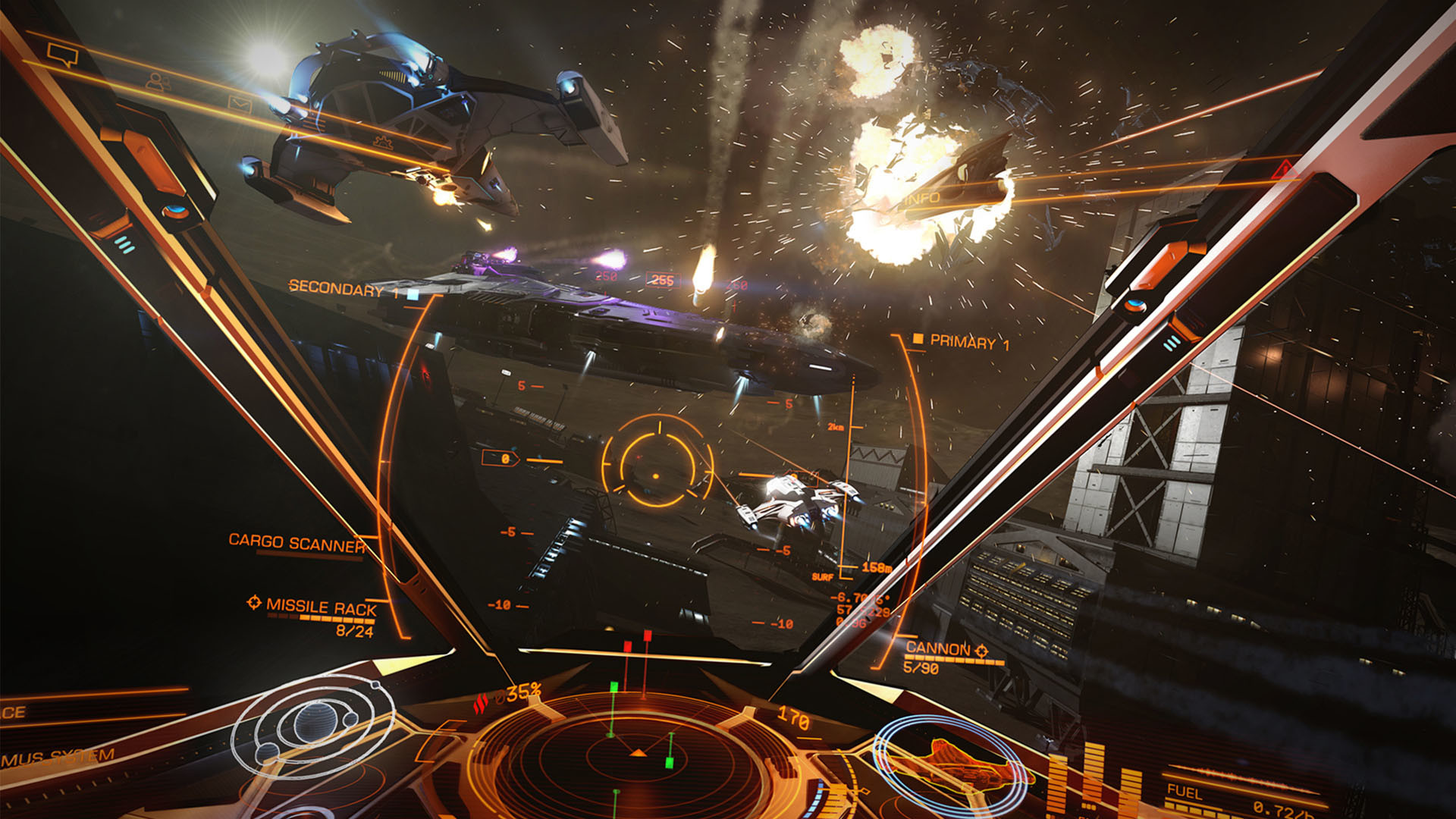Space sims epitomise the wish-fulfilment element of games better than any other genre. One of the first genres to tap into that innate human desire to explore, space sims allowed us to escape confines of earth and investigate the far reaches of our solar system, our galaxy, and beyond. The original Elite and its imitators also offered a glimpse of how expansive and multifaceted games would eventually become, offering multiple ways to advance through its large, open universe.
The space sim genre also has a turbulent history. Incredibly popular in the nineties, space sims died out almost completely in the 2000s, barring a handful of major exceptions. They’ve since re-emerged in the last decade or so thanks to a combination of alternative funding models and general renewed interest, resulting in a new golden age for the genre.
In assembling this list, I’ve interpreted the term space sim to mean “games that attempt to simulate space-flight in some form”. Hence, you won’t see games like Homeworld or FTL in this list, as although they are set in space, they don’t really simulate the nuances of spaceflight. That said, the list isn’t limited to Elite clones either. It includes games that focus on combat, exploration, and even the strategies of space-flight itself. Finally, I’ve limited the list to one game per series, mainly to stop myself from filling it with Star Wars games. With all that said, let’s start the countdown to ignition.
10. Freelancer
Considered today, it can be hard to see what made Freelancer such an exciting prospect when it originally launched 14 years ago. Suffering from a troubled development that saw it shed many of its more interesting features before release, today Freelancer looks like an unremarkable example of the space-sim genre.
But what made Freelancer such a thrilling prospect was how it merged the trading and open space exploration of Elite with the cinematic story-telling and spectacular action of Chris Robert’s earlier Wing Commander series, two very distinct interpretations of the genre which hadn’t interacted much prior to Freelancer’s release. Despite its flaws elsewhere, in both these elements Freelancer delivered, and that made it a significant achievement at the time.
It’s difficult to measure Freelancer’s overall quality today, as the game has been commercially unavailable for years. But if you can get a-hold of it, the Crossfire and Discovery mods add many of the features that were cut from the original design, bringing it more in line with Roberts’ original vision.
9. Star Wars: Squadrons
I debated for a while between including EA’s only genuinely great Star Wars game, and LucasArts’ more venerable TIE Fighter. Yet while the latter is undeniably a classic, it has also aged a lot. Squadrons, meanwhile, successfully carries over much of what made TIE Fighter great, while adding modern production values, a scintillating multiplayer mode, and the single most immersive way to experience the Star Wars universe.
Squadrons provides a comprehensive Star Wars dogfighting experience. Its single-player sees you fighting as pilots on both the Rebel and Imperial sides, across thirteen spectacular and inventive missions that range from assaulting imperial space stations to stealing a Star Destroyer. It lets you pilot most of the franchise’s smaller ships, from the familiar X-Wings and TIE-Fighter, to Y-Wings, B-Wings and TIE Interceptors. It also navigates a fine balance between arcade thrills and more tactical dogfighting, with stunning visuals and a nimble flight model coupled with TIE Fighter’s power-shifting mechanic that lets you shunt power to different ship systems depending on your current situation.
But what makes Squadrons a truly special game is its VR compatibility. Played in a headset, Squadrons lets you experience Star Wars space combat to scale. For the first time, you can truly comprehend the sheer bulk of a Star Destroyer or a Rebel Cruiser, and the perilous fragility of a TIE Fighter. In this regard, Squadrons is unrivalled, which makes it more than worthy of a place on this list.
8. X-3: Terran Conflict
In the mid-2000s, the space sim was in hibernation as it cruised through deep space, with barely a star or planet in sight for most of the decade. One of the few exceptions to this exception to this was X-3. Created by German developer Egosoft, X3 was one of the few singleplayer space sims released during the decade.
X-3 was a decent space sim in its own right, offering a truly huge universe to explore, alongside a detailed economy system that, amongst other things, let players buy their own stations and factories, and establish trading routes between systems. But it was the standalone pseudo-sequel Terran Conflict, that really saw Egosoft reach the height of its powers. Terran Conflict refined many of X-3’s core features, such as the UI, thus making it more accessible than the 2007 original, it also added a bunch of neat new features, such as teams of human marines that could be ordered to board enemy ships.
Its sequel, X-Rebirth, was a disaster (now somewhat mitigated thanks to post-release support), while X-4 is supposedly a decent, if still buggy follow-up. But Terran Conflict remains undoubtedly the series’ high point in balancing both depth and general polish.
7. Wing Commander
What Star Wars did for science fiction films, Wing Commander did for space-simulators. Chris Robert’s 1990 space dogfighting game is probably the most influential space sim after the original Elite, taking Braben and Bell’s 1984 masterpiece, stripping out all that boring trading, and placing emphasis on telling a compelling story and delivering high-octane combat scenarios.
Wing Commander’s approach was so revolutionary that it directly inspired the X-Wing and TIE Fighter games that would become amongst the most beloved Star Wars experiences. Indeed, LucasArts’ space sims soon outpaced Wing Commander for delivering spectacular space combat. But what makes Wing Commander and its sequels enduringly great is how it brings its space fiction to life. Between missions, the game encourages you to hang out with its impressively broad cast of characters, who are written well enough to make you feel like a part of the universe Wing Commander portrays.
The heart of Wing Commander (and its sequels) provides the player with motivation beyond simple completionism. This not only makes up for the weaker elements of its combat, but also make these primordial space combat games still worth playing today.
6. No Man’s Sky
I doubt No Man’s Sky will ever fully escape the shadow cast by its problematic release, but almost five years on from that troubled launch, developers Hello Games have slowly, determinedly built it into something special. Among the many added features are buildable bases, terrestrial vehicles, underwater exploration, proper, group-based multiplayer, VR mode, giant carrier ships that players can dock their smaller ships inside, and a reworked, more engaging story.
I still think the game is too focussed on grinding out resources in a crafting system that often fails to inspire, and some of the new content arguably contradicts the game’s initial, exploration-focussed mission statement. But the incredible procedural planets are still there, and still constantly tantalise you with strange new worlds to explore.
This too has been massively expanded since initial launch, with the major addition of ringed planets appearing alongside a bunch of smaller expansions, including worlds populated entirely by bubbles. It may not be the game players expected, whatever those expectations were. But it is, undoubtedly as space sim worth playing.
5. EVE Online
Comfortably the most successful space sim ever made, EVE Online’s universe of cruelty and community has entertaining countless players for going on twenty years. You have to buy into its dangerous and uncompromising galaxy to get the most out of it, but the reward for that is a player-driven experience quite unlike any other. With players banding together into hugely powerful corporations, these corps will frequently declare wars on each other that can have consequences for the entire game. And even if you find it too gruelling to play yourself, its remarkable, ever-shifting player-politics makes EVE more than worthy of a place on this list.
4. Kerbal Space Program
Not only is Kerbal Space Program a space sim, it’s arguably the most comprehensive space sim ever made. Where other space-sims are about interstellar trading or fighting space pirates or having adventures, KSP is about the very mechanics of spaceflight. The game tasks players with establishing a functional space programme for its cute alien Kerbals. This means designing a functional rocket ship and successfully launching it, orbiting the planet, with the primary (though not ultimate) goal of landing on the planet’s Mun.
Achieving this involves grappling with realistic physics and orbital mechanics, meaning Kerbal Space Program offers a glimpse into the realities of rocket-science and spaceflight. It’s also intensely detailed. Not only must you manage the construction and launch of your ships, you also need to manage the hiring and training of your Kerbal astronauts, plan and execute flight manoeuvres and docking with other vessels, build satellites and manage interplanetary communication networks, and so much more.
No other game simulates the minutia of spaceflight as fastidiously as Kerbal Space Program. This makes it a challenging and somewhat eccentric game, and getting your first spaceship off the ground will no doubt require significant trial and error, or the consultation of a fair few Wikis. But if you want to experience the complete thrills, spills and nuances of spaceflight, from that first launch to interstellar exploration, Kerbal Space Program is the game for you.
3. Outer Wilds
Outer Wilds is smaller than all the other games on this list, limited in scope to a single Solar System. Yet it arguably captures the majesty of spaceflight better than any of them. As much a puzzler as it is a space sim, Outer Wilds puts you at the forefront of Timber Hearth’s fledgling space program, dedicated to exploring the local star system, and unravelling the mysteries of the civilisation that inhabited it before yours.
And what a star system it is to explore. Outer Wilds’ planets are as distinctive as they are dangerous, each one containing more ideas than the entire galaxies of most space games. They include the hourglass twins, a binary planet system that share the same sandy surface, intermittently depositing the sand from one to the other as they orbit. Giants Deep, meanwhile, is a gas giant wracked by storms so powerful they can catapult entire islands into the stratosphere.
You’ve only got around twenty minutes to explore this strange and hostile system before the sun at its centre goes supernova, whereupon you’re cast back to the starting point on your home planet, and the whole cycle begins again. And Outer Wilds is fundamentally about cycles, about learning what happens on different planets at different times, then using this information to solve its intricate clockwork puzzle.
More than this though, Outer Wilds captures the cosmic majesty of space, the small and fleeting nature of our own existence. There’s something oddly mystic in approaching another part of the game’s puzzle, only for the sun to suddenly wink out of existence, and know that in moments you’ll be consumed by its exploding fire. All you can do it close your eyes, wait for it to wash over you, and then start again.
2. Freespace 2
The action-packed dogfighting pioneered in Wing Commander was mastered in Freespace 2. Developed by Volition Software, Volition 2 offered a rousing, intelligently crafted space opera told through elegantly crafted tactical space combat missions.
Freespace 2 is over twenty years old, but it still looks spectacular. The use of colour in both its environments and its combat help considerably to stave off the ravages of time, while its motley interstellar battlefields are illuminated by searingly bright laser and missile fire. Combined with its varied space environments and imaginative mission structures, Freespace 2’s combat holds up remarkably well today.
Yet what makes Freespace 2 special is its storytelling and the sense of camaraderie it engenders between you and your squadmates. Squad tactics is a significant part of the experience, with your squadmates able to help you destroy tough enemies, or pull away opponents trying to turn you into space dust. The story, meanwhile, explores what it means to be human when you’re irrevocably separated Earth itself, and what it means to fight for a planet that, in all likelihood, you’ll never see again.
1. Elite Dangerous
After 36 years, Elite remains King of the space castle. Elite Dangerous offers the same blend of fighting, trading and exploration that made the original such a landmark title, but with a renewed focus on making the experience as immersive as possible.
In this, Elite Dangerous is comfortably the most successful game in this list. From its hyper-detailed space-cockpits, to its seamless, player-driven station docking, to its highly realistic galaxy design with authentic star-systems and orbital mechanics. Indeed, many of our galaxy’s more well-known star systems are hand-crafted so they appear in game as authentically as possible. One of my fondest memories of playing Elite Dangerous involved taking a grand tour of the galaxy, searching out of its most incredible sights, from the massive bulk of the Red Giant Betelgeuse, to the black hole located at Sagittarius A.
Somewhat feature-light at launch, Elite has been consistently supported by Frontier Developments over the last six years, and a huge number of features have been added, including planetary landings and ship-launched fighters, the return of the Thargoids, new missions, new ships, and overhauls to various systems such as mining and the in-game crime and punishment system. A new expansion, Odyssey, which introduces ground-based combat, is coming later this year, another significant evolution in Frontier’s fantastic interstellar enterprise.


